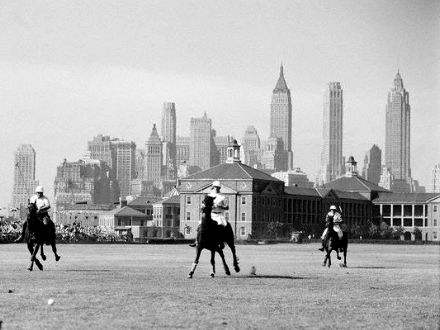
About Andrew Cusack
 Writer, web designer, etc.; born in New York; educated in Argentina, Scotland, and South Africa; now based in London.
Writer, web designer, etc.; born in New York; educated in Argentina, Scotland, and South Africa; now based in London. read more
News
Blogs
Reviews & Periodicals
Arts & Design
World
France
Mitteleuropa
Knickerbockers
Argentina
The Levant
Africa
Cape of Good Hope
Netherlands
Scandinavia
Québec
India
Muscovy
Germany
Academica
Governors Island Revisited

EVERY ONE OF THE myriad plans put forth for the ‘redevelopment’ of the venerable old Governors Island in New York Harbor has so far either stalled, been neglected, or otherwise poo-pooed. In this, we have something to rejoice. As I have often said, realistically speaking there is little that can be done to it which will not neglect or disgrace the island’s long military heritage. The officially-approved ideas put forth so far have been horrific: an amusement park, a casino, a ‘technology park’, as well as a number of other vapid proposals.
Naturally, we’d be enthused if it returned to its former role as swankiest post in the entire Army and the home of Army polo, but don’t hold your breath. West Point being the single exception, if it has even a touch of history, tradition, or class, Congress and the Department of Defense will do their best to get rid of it. After all, the National Guard has been pulled out of the Seventh Regiment Armory, the Navy has withdrawn all but a few institutions from Newport, and the Army has left the ancient Presidio of San Francisco; how long will it be until Fort Leavenworth’s foxhounds are brought out back and shot by the Monotony Monitors?

Gen. James H. McRae greets polo players on the island, 1927.

The Veteran Corps of Artillery on the Parade Ground, Governors Island.
Nonetheless, while meandering through a book on the history of Governors Island from the 1637 to 1922, I came across a rather excellent depiction of one of the early plans for the improvement of the island, devised just after the First World War. Owing to landfill from subway and tunnel excavations, the island expanded during the period, and it was thought that something proper ought to be done with it rather than just fill it with utilitarian military huts and barracks.
Eventually, a whole complex of neo-Georgian brick buildings was constructed, including Liggett Hall, the longest building in the world at the time of its completion, and the only single building which could house an entire regiment. Before that plan was finalized, however, someone thought of surrounding old Fort Jay, a Revolutionary-era star fortification, with a similarly shaped castellar structure in that particular American military style of the late nineteenth and early twentieth centuries. The result was brilliant.

Click [here] for a larger image of the castle depiction. Just imagine what it would have been like to sail into New York Harbor and to be greeted by a castle and a little village on an island, right smack dab next to the towering skyscrapers of lower Manhattan. Genius.
My only qualm with the plan is that I would orient the main gate towards the rest of the island, rather than towards the sea. Then, a little main street could roll from the castle on its height to a parade ground at the other, lower, end of the island. It would give the units stationed there an excuse to march from their barracks in the castle down to the parade ground—and really, shouldn’t life be organized so as to have more parades and military marches? I certainly believe so.

Regardless of how enjoyable that would have been, what actually did end up getting built on the island after the war was certainly commendable nonetheless, as you can see in my previous post giving an overview of Governors Island.

Search
Instagram: @andcusack
Click here for my Instagram photos.Most Recent Posts
- Silver Jubilee November 21, 2024
- Articles of Note: 11 November 2024 November 11, 2024
- Why do you read? November 5, 2024
- India November 4, 2024
- The Lithe Efficiency of the Old Constitution November 4, 2024
Most Recent Comments
Book Wishlist
Monthly Archives
Categories



Great post. That top photo is brilliant.